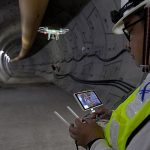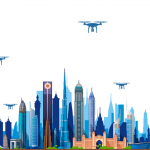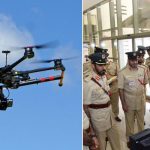How Drones Can Help Scientists Save Whales from Extinction Leave a comment
How Drones Can Help Scientists Save Whales from Extinction
Whales are on the verge of extinction and scientists from all over the globe are greatly concerned about this issue. Overfishing, pollution, acidification, all these aspects really influence the whales’ state of health. To solve these issues and try to rescue whales, scientists started using drones in their researches devoted to studying the lives of mammals.
More information about the ways of using drones in current times you can find in this article. Right now, we will analyze a solution, developed by the Ocean Alliance with the aim to save whales.
Difficulties Scientists Face Gathering the Information about Whales
In sober fact, this is a real problem to know anything about the whales. Only several years ago, it was an issue to collect the data about whales. To find out anything about whales, scientists needed to get biological samples. This procedure was expensive, dangerous and even time-consuming. The only safe way to get a biological sample was to necropsy a dead whale. Yet still, scientists were made to wait until a whale dies. One more way was to get a live whale and dart it (for retrieving the piece of skin) or try to gather samples of whale’s blow. As you see, all these methods were mostly ineffective and dangerous for scientists.
Nevertheless, an exhaled breath condensate comprises lots of biological information like stress hormones, ketones, DNA or pregnancy hormones.
SnotBot – an Ideal Solution for Getting Whale’s Snot
To solve this issue, scientists from the Ocean Alliance created less expensive and more effective methods of collecting the whale’s blow – the usage of drones!
The thing that these days more and more people buy drones isn’t surprising. Mostly, each person wants to buy a drone, aiming to capture aerial footage. Nevertheless, the drone technology is probably the only method allowing scientists to know more about whales and save them from pollution and extinction.
Modified consumer drones can be an effective tool for scientists, engaged in marine mammal science. The Ocean Alliance developed the SnotBot program. This is absolutely new research paradigm allowing scientists to collect the whale blow. They used DJI Inspire 1 for this purpose. Except for this option, drones can also help scientists gather lots of other useful data.
What type of biological data scientists can gather with the help of SnotBot drones
In sober fact, a SnotBot drone is endowed with a special petri dish, which is used with the aim to gather the biological material.
SnotBots are used for different purposes:
- To collect DNA. It gives scientists the information about the animal’s sex and biological fingerprint.
- Pregnancy hormones. This information is crucially important for scientists because it allows them to understand their reproductive cycle.
- Stress hormones. A SnotBot gathers this data easily and doesn’t add more to the animal’s stress level.
- This information helps scientists understand the state of health and energetic of whales.
Except for this information, scientists can also find out lots of immensely valuable facts. Drones are endowed with cameras and this feature helps see the behavior of whales from the sky. Earlier, they were made to hire helicopters to gather this information. Yet still, helicopters are too loud and very expensive. Buying drones and using them for this purpose, scientist keep watch over the whale’s activities without frightening them with additional noise of helicopter motors.
SnotBot is an ideal tool, giving scientists an opportunity to understand the problems of mammals living in the ocean. Besides, scientists consider a drone technology to be an irreplaceable tool for them. It suggests absolutely new approach for the studying of marine mammals.
Right now, Ocean Alliance sent three expenditures, equipped with SnotBots to Patagonia, Sea of Cortez and Alaska. Scientists proved the fact that the whale’s snot can easily be collected with the help of drones.
As you see, the drone industry gradually comes into all spheres of our life. Very soon people will start using drones with the aim to deliver goods. Furthermore, drones can be rather useful for rescue teams on beaches to prevent shark attacks. So, we see that drones aren’t just one more modern tendency which will soon fall into oblivion. This technology will definitely be developing!




